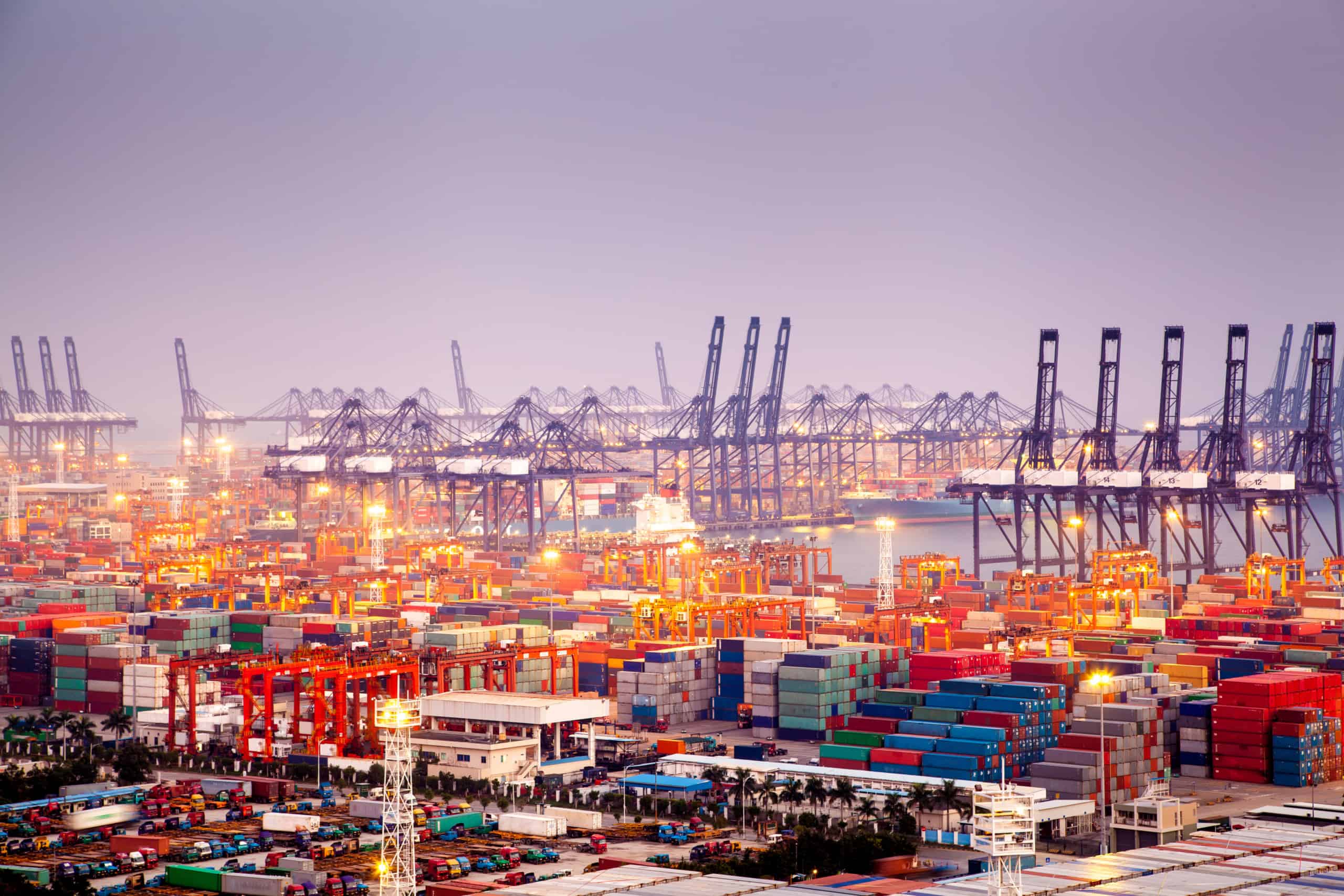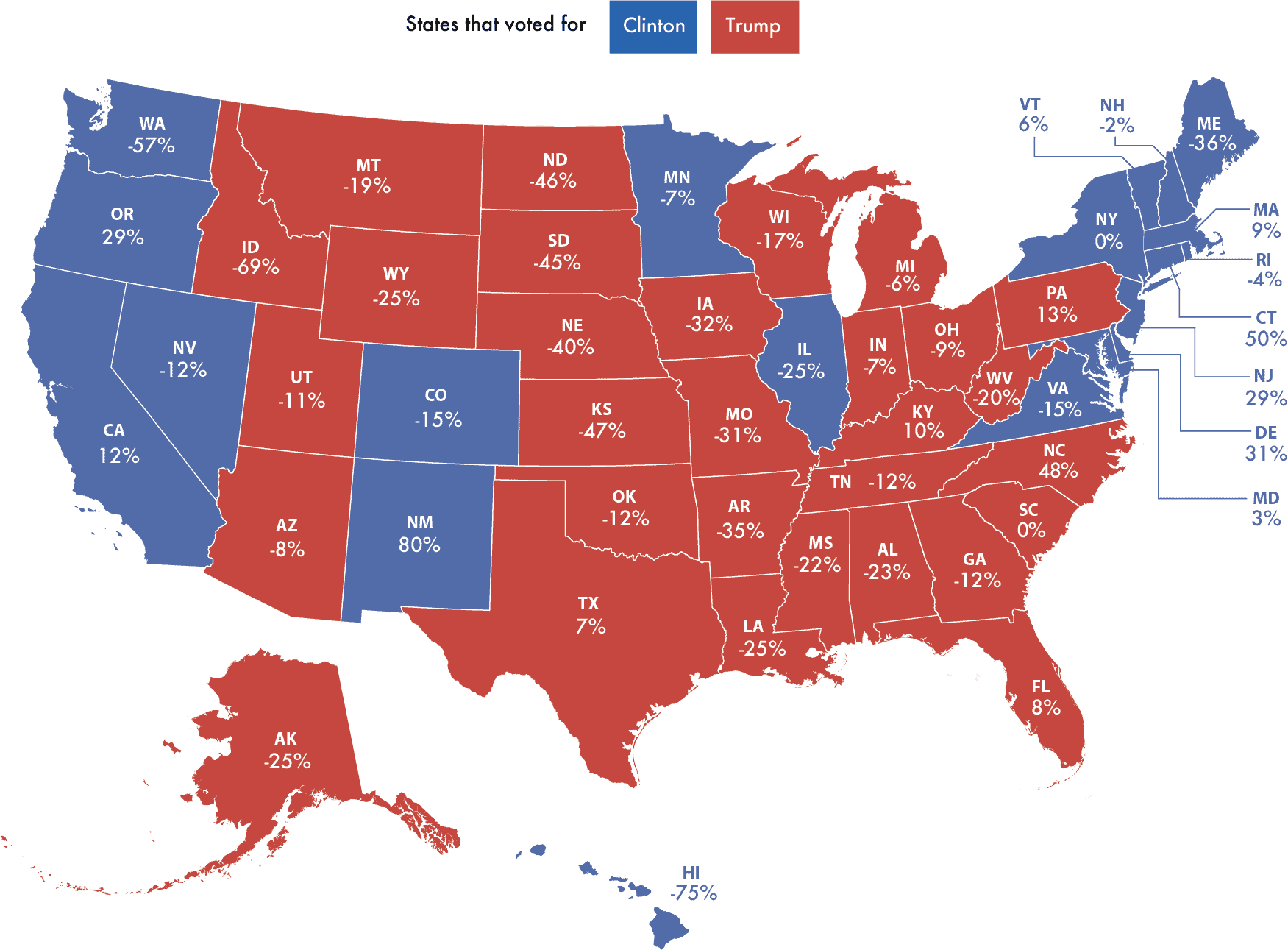
Credit: zhangyang13576997233, Shutterstock
As part of The Wire’s election issue, we are examining different aspects of the economic relationship between China and the U.S., and how that has evolved during the past four years. Here, we zoom out to look at some of the data behind the contentious trade relationship.1For another perspective see this CSIS report on China and global trade.
We gathered data on the growing U.S. trade deficit with China, how individual states’ exports have fared under the Trump administration, the top products that the U.S. and China sell to one another, and some of China’s biggest exporting companies.2For another view of China’s trade dominance, see this graphic created this year by the team at Visual Capitalist.
How Trade with China Fared under Trump
China is America’s largest goods trading partner. The two countries traded a total of nearly $560 billion in goods in 2019, up from about $116 billion in 2000, a year before China’s accession to the World Trade Organization.
After China joined the W.T.O., its trading volumes skyrocketed, and the U.S. began racking up huge trade deficits. From Apple iPhones to just about everything Wal-mart sells, consumer products are being made in China. President Trump made it an election year issue in 2016, and after he took office, he launched a “trade war” between the U.S. and China that really began in 2018 — when Washington imposed $34 billion in tariffs on Chinese goods in an attempt to pressure China to change some of its trade practices. The conflict escalated over the next year until tariffs reached into the hundreds of billions. The two countries reached a “phase one” agreement early this year, but disagreements remain.
In the recent presidential debate, Biden claimed that the U.S. has “a higher deficit with China now than we did before.” It’s true that under Trump, the U.S. trade deficit with China rose to its highest level, at close to $419 billion in 2018. But in 2019, the deficit declined to match its 2014 level. Some analysts say that the deficit may have been even higher but some Chinese companies, including Huawei, began aggressively buying U.S. goods and stockpiling them ahead of sanctions and tariffs. Analysts with Bloomberg, the Financial Times and other organizations have already begun to weigh in, noting that China has gained despite the trade war.

Data: U.S. Census Bureau
Few States Grew China Exports Between 2016 and 2019
Still, according to the U.S.-China Business Council, China is the third-largest market for U.S. exporters, accounting for $104.8 billion in exports in 2019.
Many states, especially agricultural states, were hit hard by the tariffs. Exports declined 18 percent between 2017 and 2019. The Phase One trade deal may alleviate some of this pain, if China keeps its promise to substantially increase purchases of U.S. goods.

Data: U.S.-China Business Council, Design: Hiram Henriquez
What China and the U.S. Ship to Each Other
China’s biggest shipments to the U.S., in terms of trade balance, are mostly manufactured goods such as cell phones, computers, toys and furniture. China is the world’s largest goods manufacturer, accounting for more than a third of the world’s manufacturing output.
The goods the U.S. ships to China are more of a hodgepodge, with soybeans topping the list. The U.S. also ships lots of paper (including waste paper), as well as airplanes, chips and machines used for manufacturing semiconductors.
Soybeans were hit by the first round of tariffs in 2018, which devastated U.S. farmers whose biggest customer, by far, is China.
As The Wire wrote previously, the U.S. is home to many of the most advanced semiconductor design firms, which then send their designs abroad for manufacturing.

China’s Top Exporting Companies
Every year, China’s Ministry of Commerce releases a list of the country’s top importers and exporters. The list is dominated by foreign-owned companies, including manufacturers of computers, phones, other electronics and semiconductors.
Foxconn, the Taiwanese electronics manufacturer, tops the list. The company assembles products for Apple, Nintendo, Microsoft, Xiaomi and other major multinational electronics companies. There are also foreign affiliates of Intel and Dell, and the names of global “contract manufacturers,” firms that specialize in assembling electronics for global brands.
Also on the list are China’s top state-owned oil companies, Sinopec, China National Petroleum Corp., and CNOOC.
| China’s Biggest Exporters | |
|---|---|
| Company | Exports |
| Foxconn (Zhengzhou) | $31.64 billion |
| Quanta Computer (Shanghai) | $17.15 billion |
| Huawei Terminal Co., Ltd. | $15.97 billion |
| Foxconn (Shenzhen) | $15.05 billion |
| Foxconn (Chengdu) | $14.61 billion |
| Sinopec | $12.76 billion |
| Pegatron (Shanghai) | $12.74 billion |
| Shenzhen Huawei Co. | $12.71 billion |
| Pegatron (Suzhou) | $12.47 billion |
| China National Petroleum Corp. | $11.55 billion |
| Intel Products (Chengdu) | $11.45 billion |
| Quanta Computer (Chongqing) | $10.78 billion |
| Micron Semiconductor (Xi’an) | $9.96 billion |
| Pegatron (Kunshan) | $8.46 billion |
| Dell Trading (Kunshan) | $7.88 billion |
| Oppo (Dongguan) | $7.52 billion |
| Inventec (Chongqing) | $7.25 billion |
| Foxconn (Taiyuan) | $6.88 billion |
| Midea Group | $6.47 billion |
| Xiaomi | $6.12 billion |
| Orient International (Group) Co., Ltd. | $5.56 billion |
| China National Offshore Oil Corp. (CNOOC) | $5.28 billion |
| Intel Semiconductor (Dalian) | $5.1 billion |
| Intel Trading (Shanghai) | $5.05 billion |
| Dell (Chengdu) | $4.93 billion |

Emma Bingham is a Boston-based editor for The Wire. Previously, she was editor in chief of The Tech at the Massachusetts Institute of Technology. @emmapbingham



